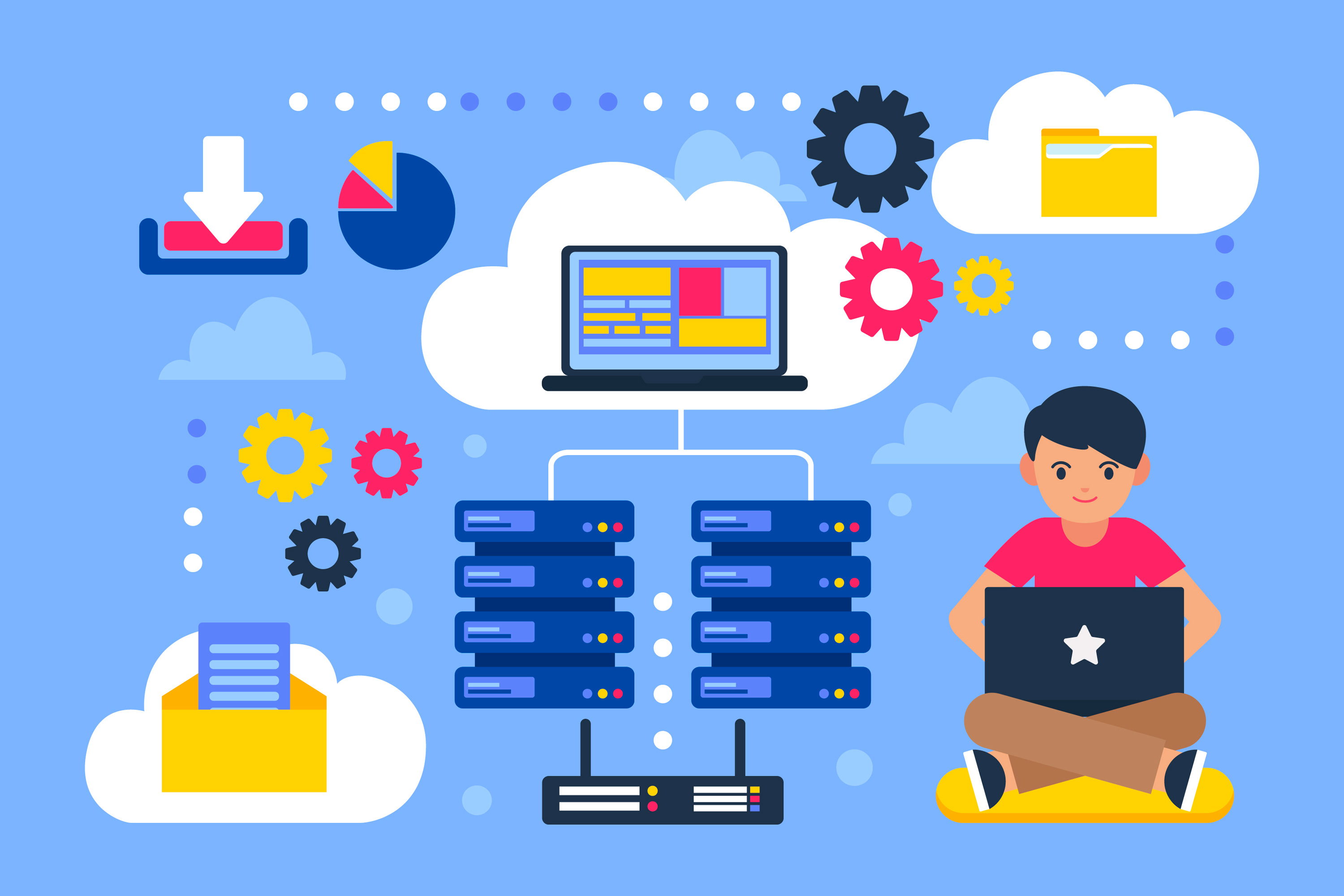What is Cache? Definition, Working, Types, and Importance
 QuickSilicon
QuickSilicon
In the vast landscape of computing, there exists a silent hero - the cache. Often overlooked but crucial to system performance, caches play a vital role in modern computing architectures. In this exploration, we'll delve into the depths of caches, unraveling their mysteries from the basics to the intricacies of their operation.
What is Cache?
Imagine a library where you frequently borrow books. The librarian, anticipating your return, keeps a few of your favorite books near the entrance, making them readily accessible. Similarly, caches store frequently accessed data, reducing the time it takes to fetch information from slower memory sources like RAM or disk. This fundamental concept lies at the heart of caching.
Caches serve as intermediaries between the processor and main memory, holding copies of frequently accessed data. When the processor requests data, the cache checks if it's already stored. If found, it's a cache hit; otherwise, it's a cache miss, and the data is fetched from main memory.
Understanding the basics of caching is essential to grasp its significance in enhancing system performance. By minimizing the need to access slower memory tiers, caches significantly speed up data retrieval, resulting in smoother and more responsive computing experiences.
Types of Cache
Caches come in various forms, tailored to different needs within the computing ecosystem. From the lightning-fast CPU cache that stores frequently accessed instructions and data, to the browser cache that speeds up web page loading times, caches abound in our digital lives. Each type possesses its unique characteristics, optimized for specific tasks and constraints.
CPU caches, for instance, are divided into multiple levels, with each level closer to the processor being smaller but faster. The L1 cache is the smallest and fastest, directly integrated into the processor core. In contrast, the L3 cache is larger but farther away, serving multiple processor cores.
Disk caches, on the other hand, operate at the interface between the CPU and the disk storage system. They store recently accessed data from the disk in faster-access memory, reducing read times and improving overall system performance.
Browser caches aim to enhance web browsing experiences by storing web page elements such as images, scripts, and stylesheets. By locally storing these elements, browsers can quickly retrieve and render web pages, reducing loading times and improving responsiveness.

Cache Organization
Picture a warehouse with shelves neatly arranged to store boxes. Caches employ a similar organizational structure, dividing memory into blocks, sets, and lines. The cache size, associativity, and block size are carefully chosen parameters, balancing the trade-offs between speed, capacity, and complexity.
Cache organization is crucial for efficient data retrieval. Direct-mapped caches, for instance, map each block of main memory to exactly one cache location, simplifying access but limiting flexibility. In contrast, set-associative caches allow a block to reside in any set within the cache, offering a balance between speed and flexibility.
Fully associative caches provide the utmost flexibility, allowing each block to reside anywhere in the cache. However, this flexibility comes at the cost of increased complexity and higher access times.
The choice of cache organization depends on various factors, including the specific application requirements, the underlying hardware architecture, and the desired performance goals.
Cache Mapping Techniques
When a CPU needs data, it consults the cache using a mapping technique. Direct mapped caches assign each block of main memory to exactly one cache location, like assigning a parking spot to a car. Set-associative caches offer more flexibility, allowing a block to reside in any set within the cache, akin to choosing from multiple parking aisles. Fully associative caches grant the utmost freedom, with each block capable of residing anywhere in the cache, much like an open parking lot.
Cache mapping techniques influence cache performance and efficiency. Direct mapped caches, for instance, are simpler to implement but may suffer from higher cache miss rates due to potential conflicts. Set-associative and fully associative caches, on the other hand, offer better flexibility and lower miss rates but require additional hardware complexity.
The choice of cache mapping technique depends on various factors, including the application's access patterns, the size of the cache, and the available hardware resources.
Cache Coherency
In a multi-core processor, maintaining cache coherency becomes paramount. Imagine several chefs working in a shared kitchen; they must communicate to ensure each has the latest ingredient updates. Cache coherency protocols, such as MESI, facilitate this communication, ensuring data consistency across caches and cores.
Cache coherency ensures that all cores in a multi-core processor have a consistent view of memory. When one core modifies a memory location, the corresponding cache lines in other cores' caches must be invalidated or updated to reflect the change.
MESI (Modified, Exclusive, Shared, Invalid) is one of the most commonly used cache coherency protocols. It defines four states for cache lines: Modified, Exclusive, Shared, and Invalid. These states dictate how cache lines are managed and updated across multiple cores.
Maintaining cache coherency is essential for the proper functioning of multi-core processors. Without effective cache coherency protocols, data inconsistencies and race conditions may occur, leading to unpredictable behavior and system crashes.
Cache Performance
The success of a cache is measured by its performance metrics. Hit rate, miss rate, hit time, and miss penalty are among the key indicators. A high hit rate signifies efficient caching, while a low miss penalty reflects speedy access to slower memory tiers. Optimizing these metrics requires a delicate balance of hardware design and algorithmic sophistication.
Cache performance depends on various factors, including cache size, associativity, replacement policy, and access patterns. Increasing the cache size can improve hit rates by accommodating more data. Similarly, employing a more efficient replacement policy can reduce miss rates by evicting less valuable cache lines.
Understanding cache performance is crucial for designing efficient caching systems. By optimizing cache performance metrics, system designers can enhance overall system performance and responsiveness.
Real-world Examples
From the seamless loading of your favorite app to the lightning-fast response of a gaming console, caches silently work behind the scenes, enhancing user experience and system performance. Whether it's the CPU cache in a high-performance server or the disk cache in a storage system, caching mechanisms abound in our digital realm, shaping the landscape of computing.
In the realm of web browsing, browser caches play a crucial role in speeding up page load times by storing frequently accessed web page elements such as images, scripts, and stylesheets. By caching these elements locally, browsers can quickly retrieve and render web pages, providing users with a smooth and responsive browsing experience.
Conclusion
Caches, the unsung heroes of modern computing, wield immense power in optimizing system performance. From their humble beginnings as a solution to the memory access bottleneck, caches have evolved into sophisticated structures, finely tuned to meet the demands of today's digital age. Understanding the nuances of caching not only unveils the inner workings of computing systems but also empowers us to harness their full potential. So, the next time you marvel at the speed of your device, remember to tip your hat to the humble cache, silently working behind the scenes to make it all possible.
Subscribe to my newsletter
Read articles from QuickSilicon directly inside your inbox. Subscribe to the newsletter, and don't miss out.
Written by

QuickSilicon
QuickSilicon
A unique and unparalleled platform to improve your hardware design skills. Learn new concepts, implement the RTL and verify it - all in one streamlined platform.